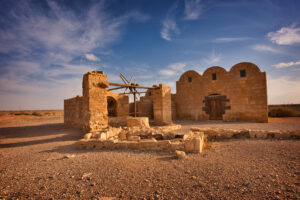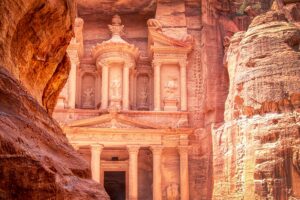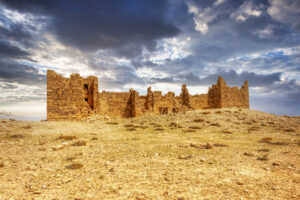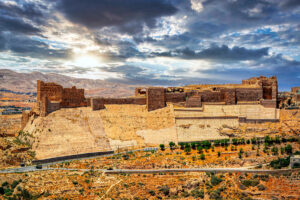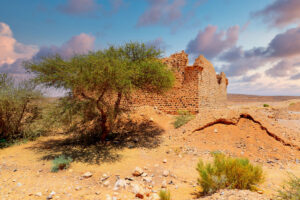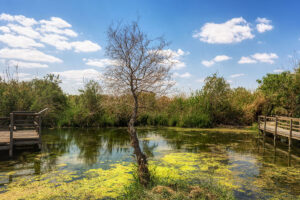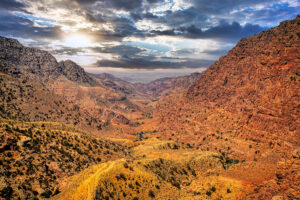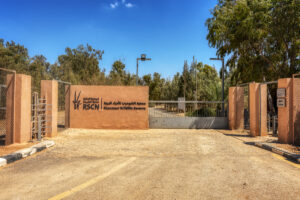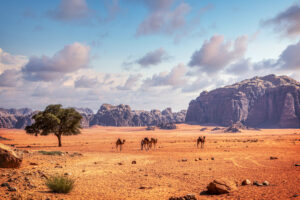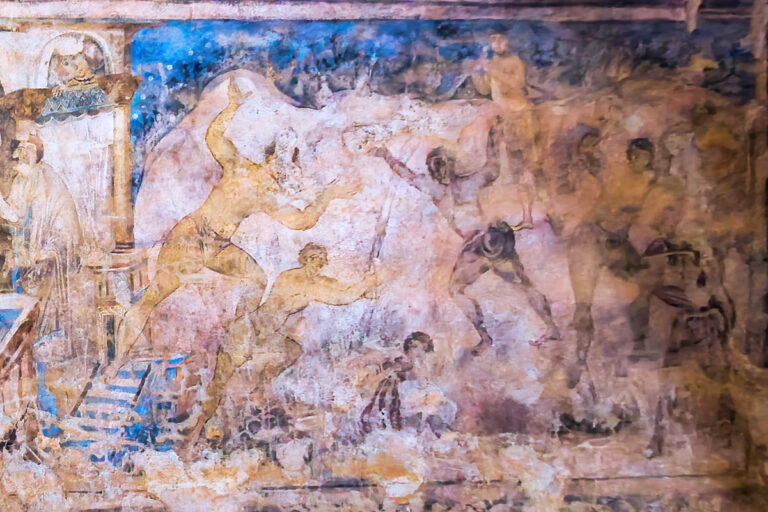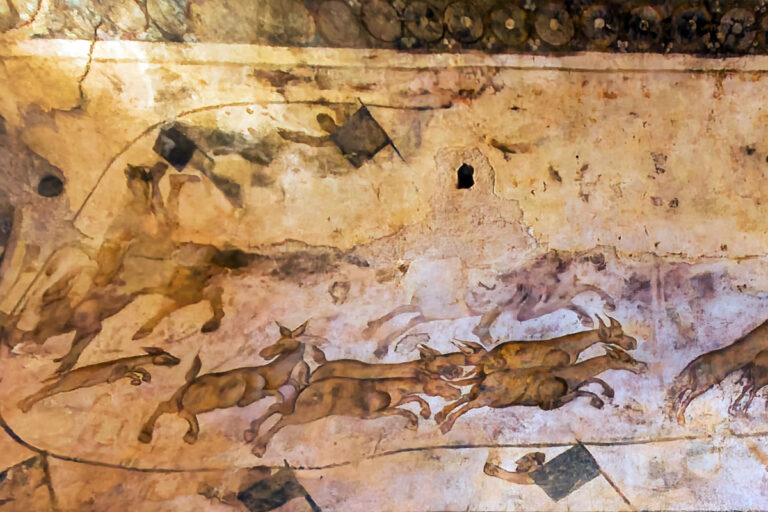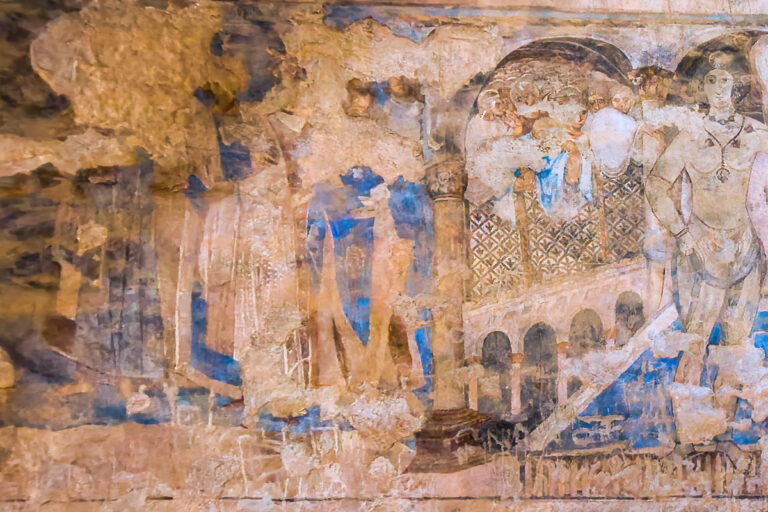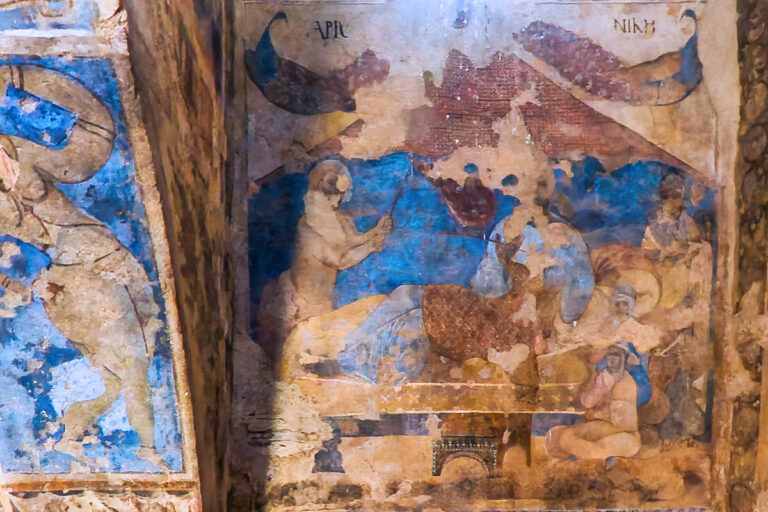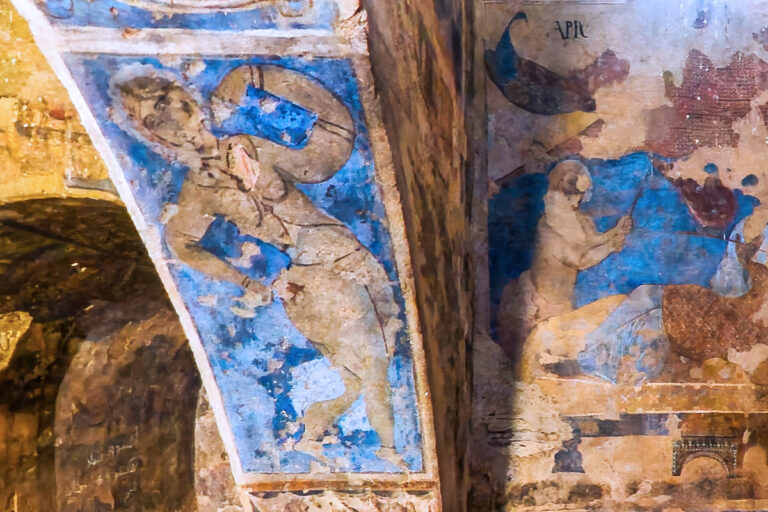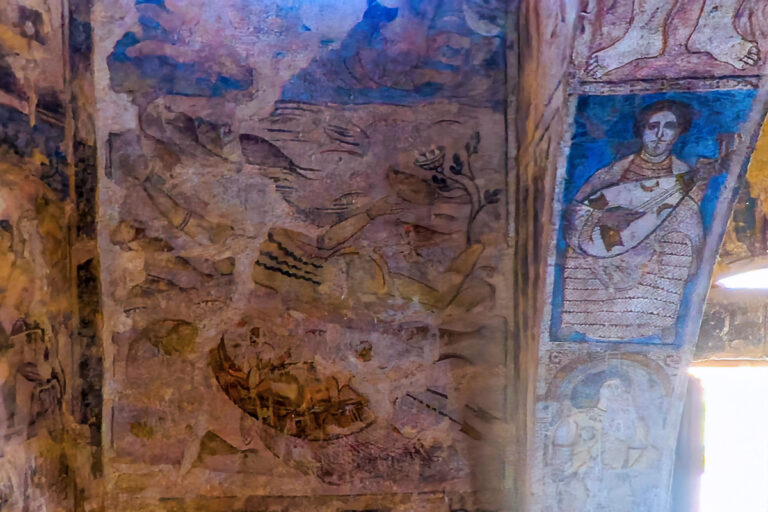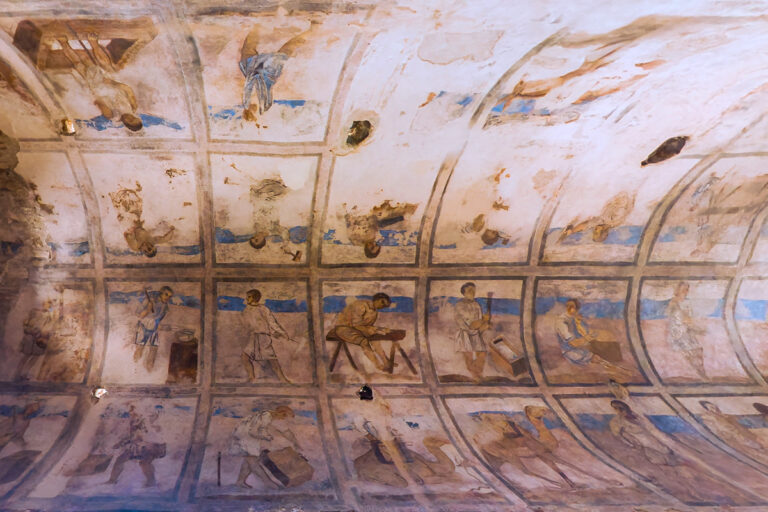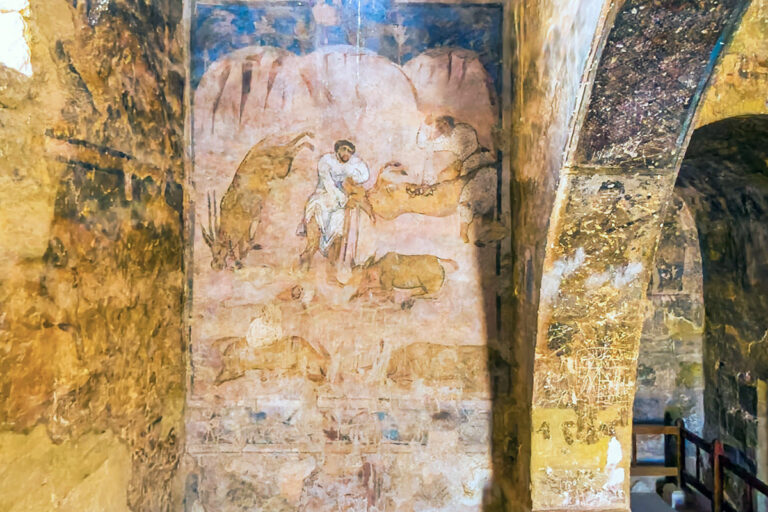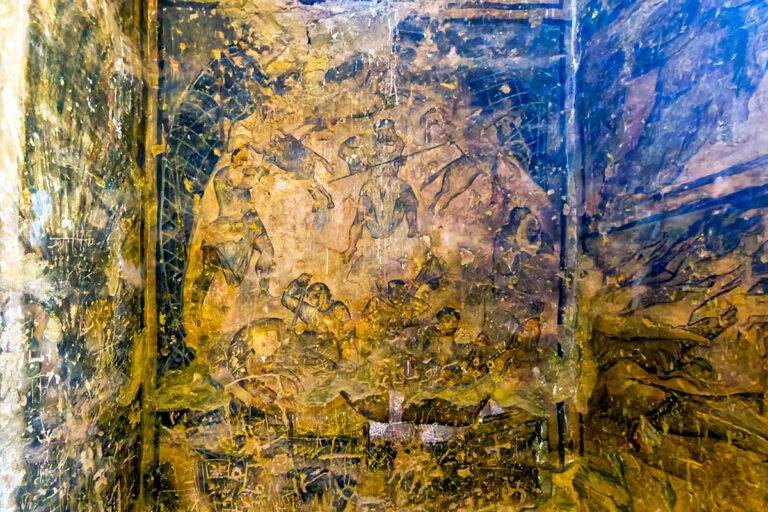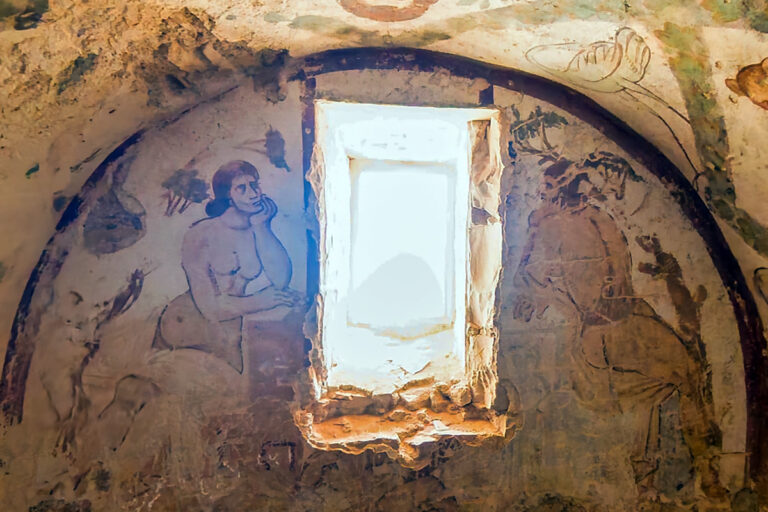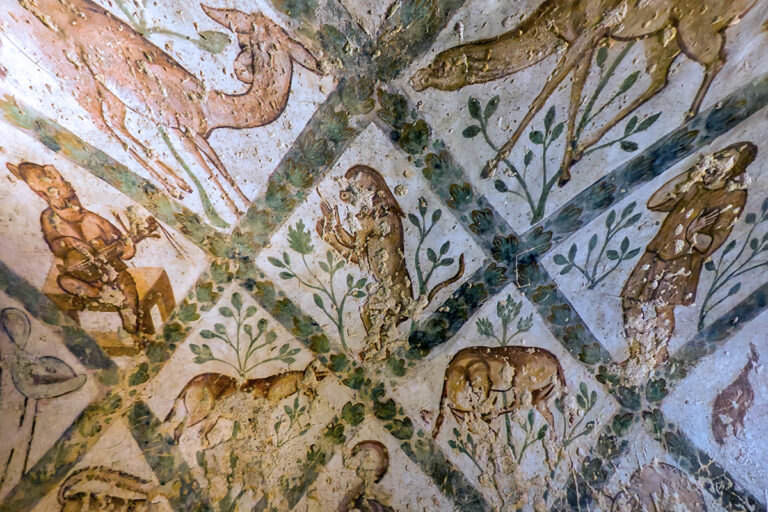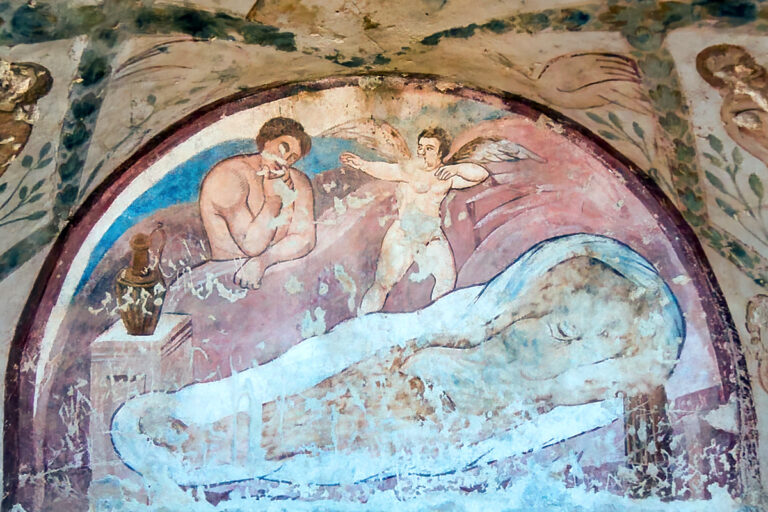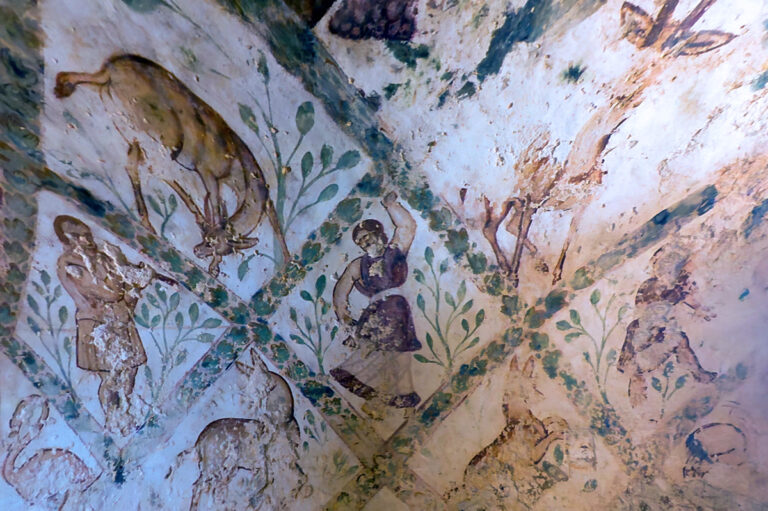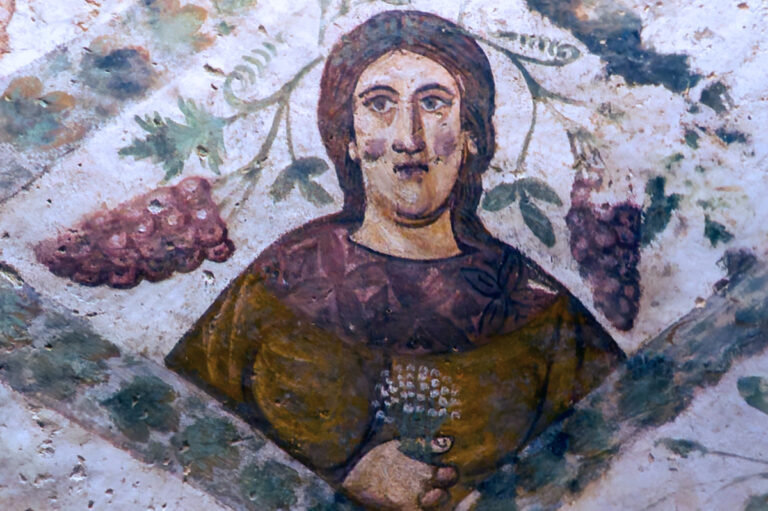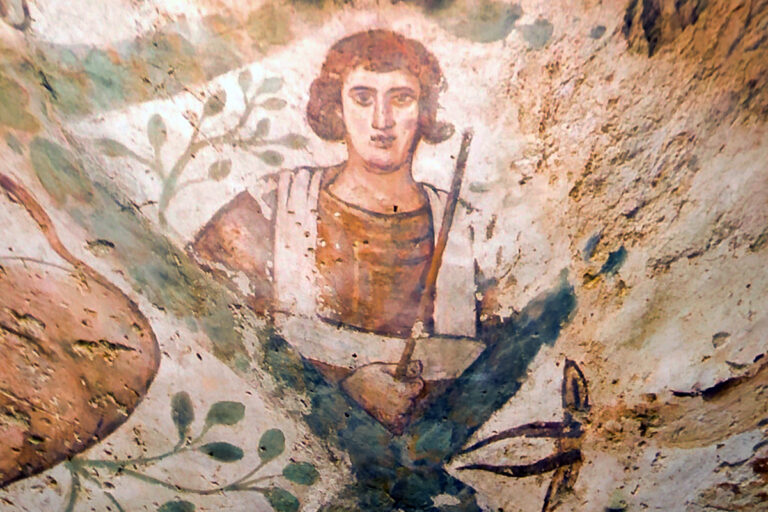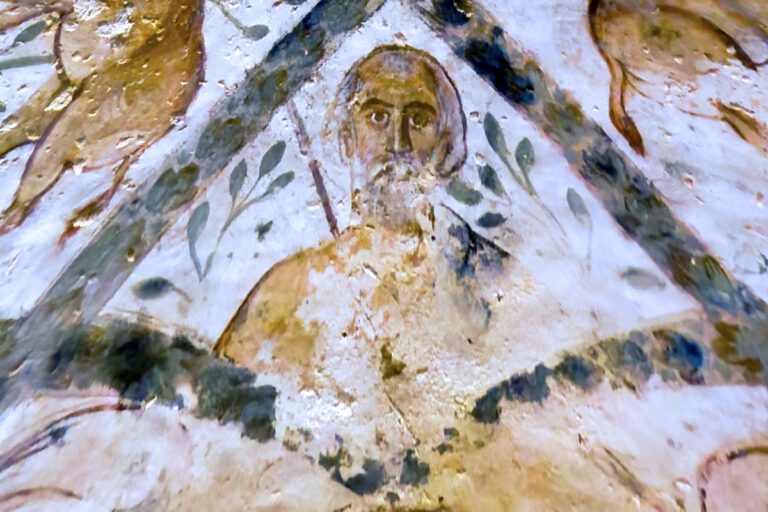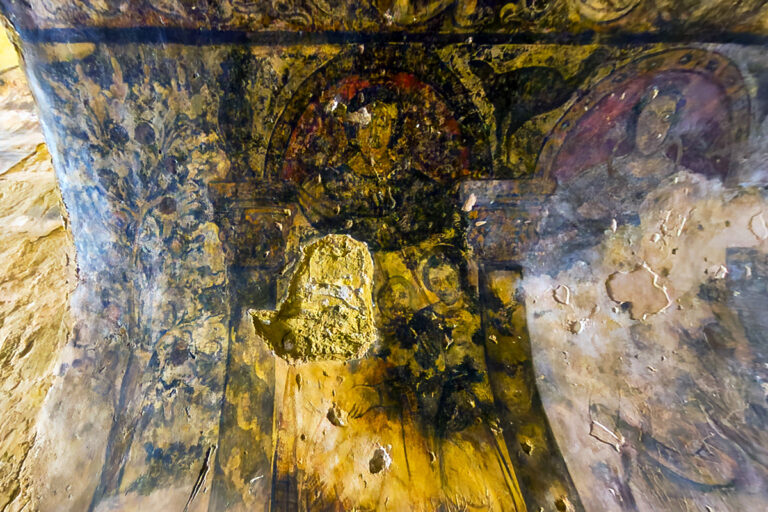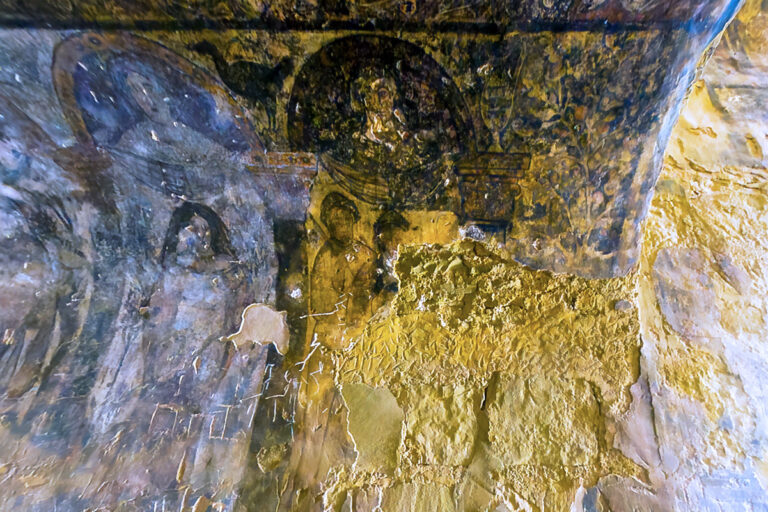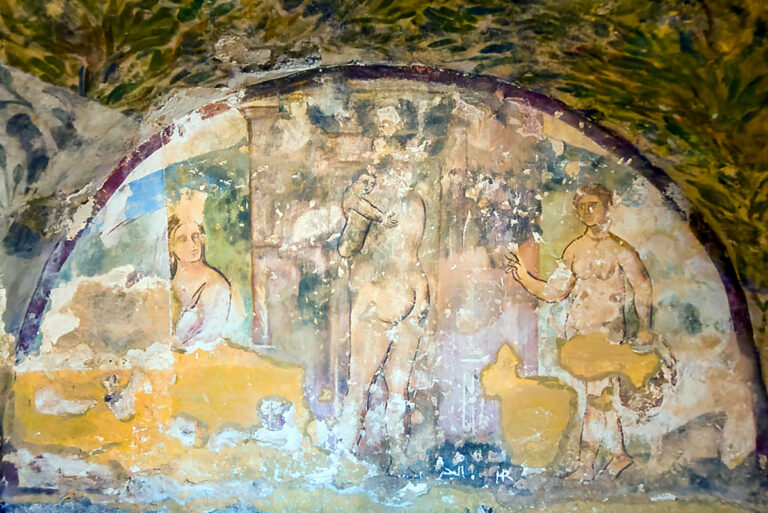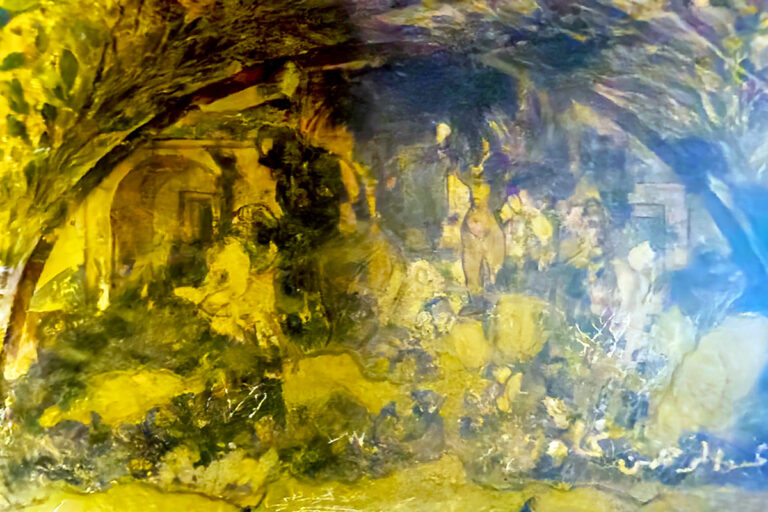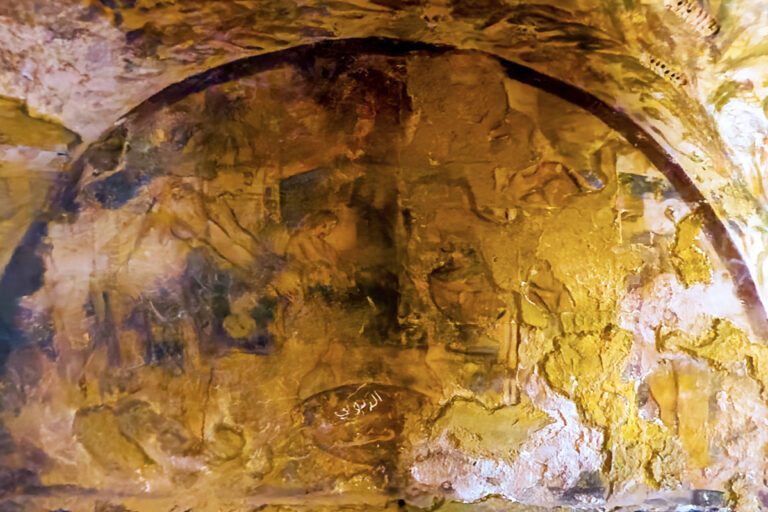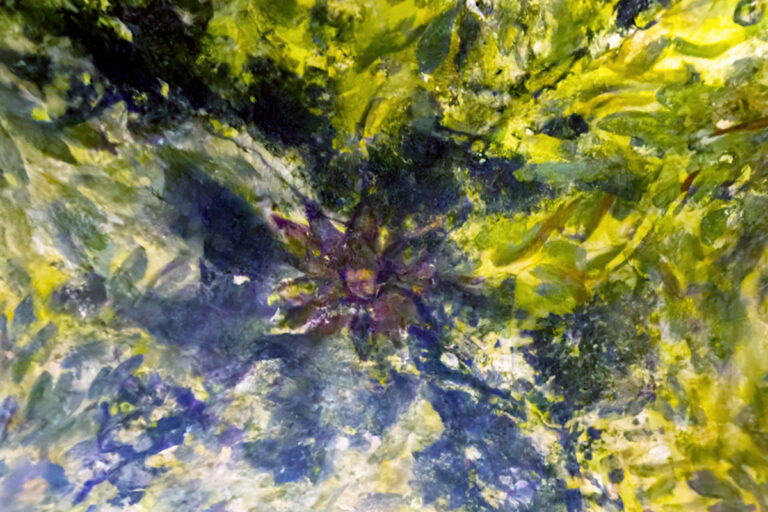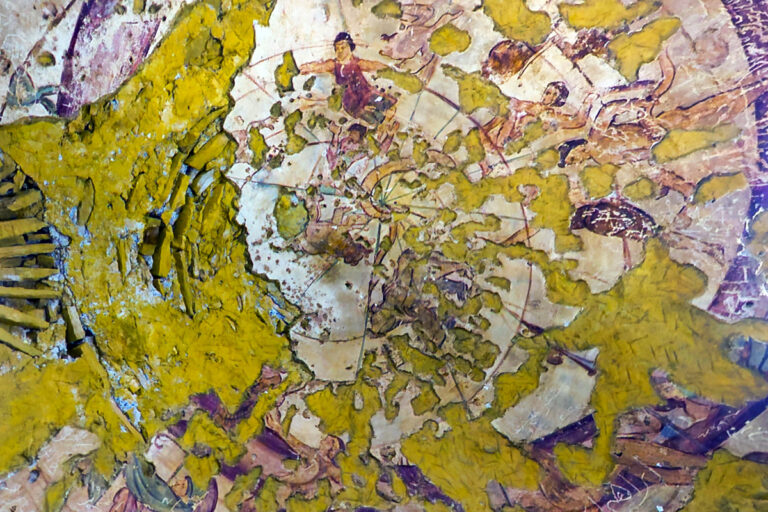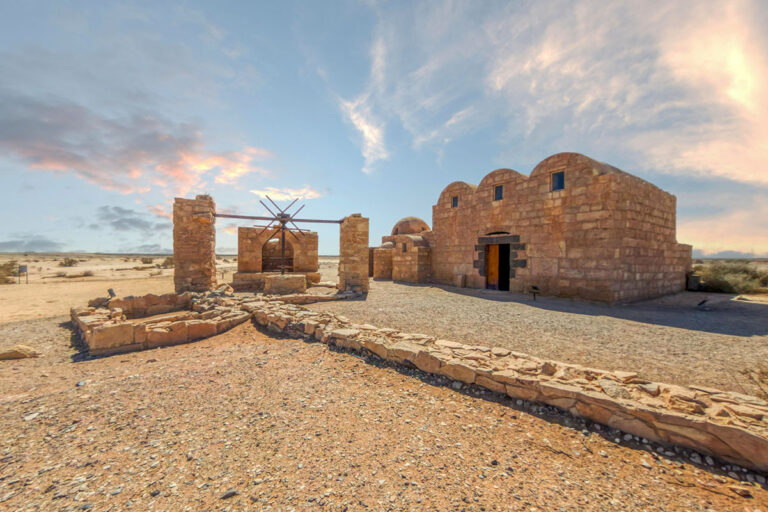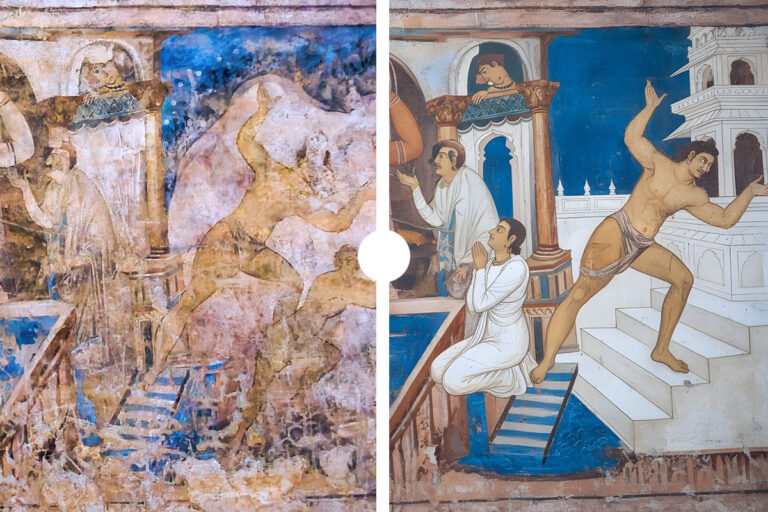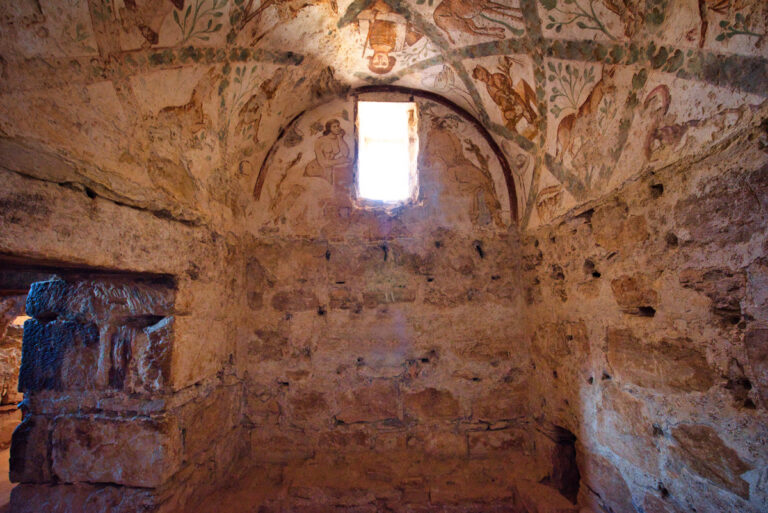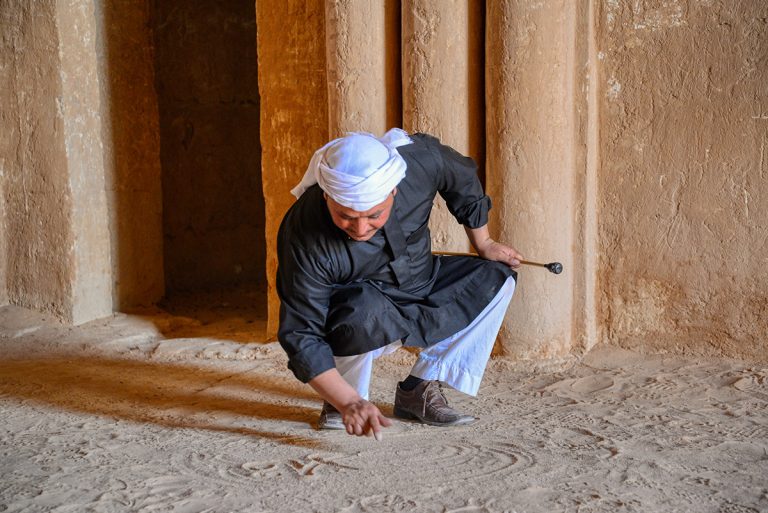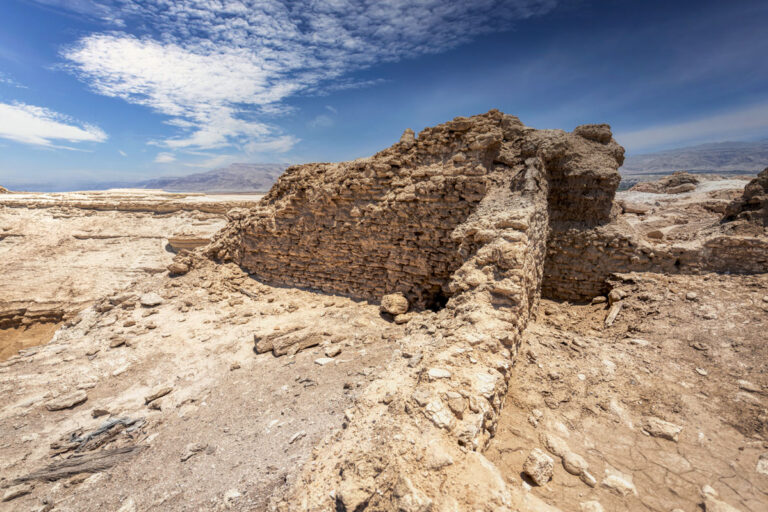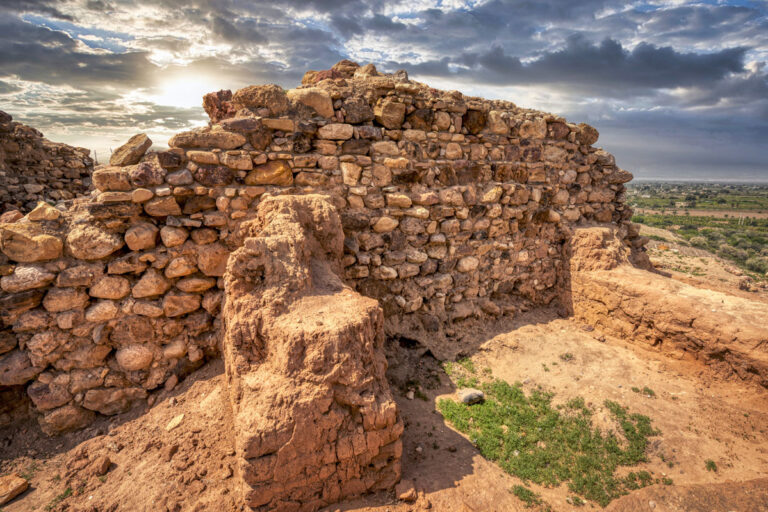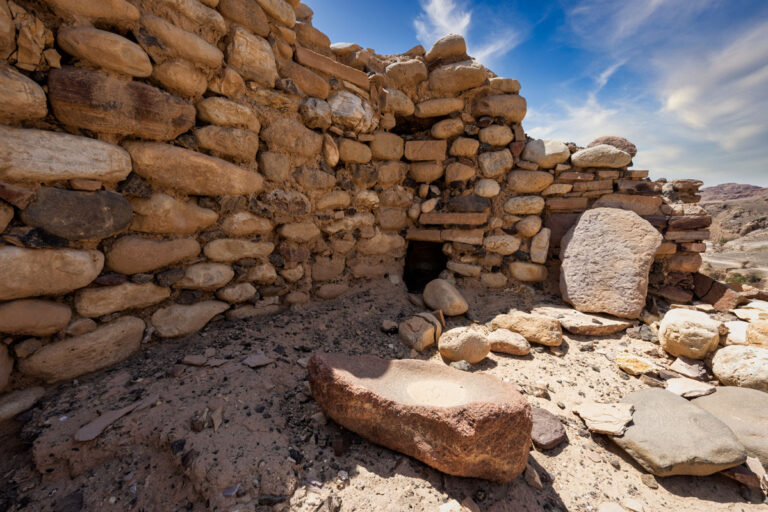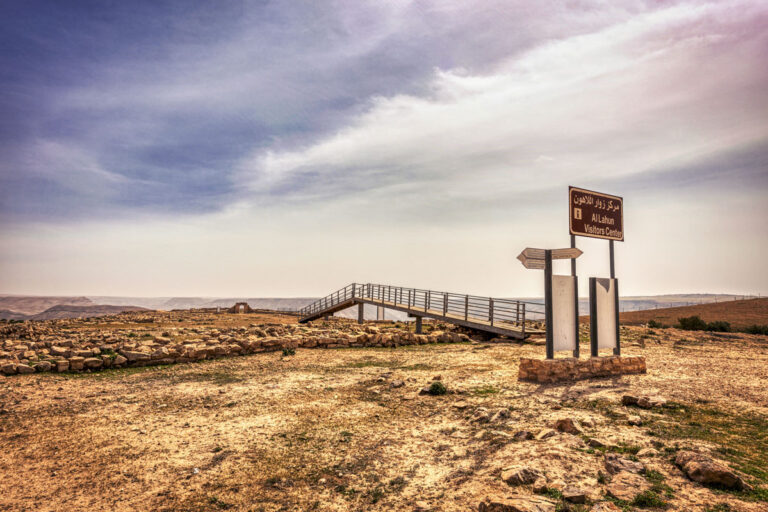The frescoes of Qasr Amra are among the most remarkable surviving examples of early Islamic art, covering nearly every surface of the desert palace’s walls and ceilings. They depict a wide range of secular themes uncommon in later Islamic tradition, offering a vivid window into the luxury and worldly interests of the Umayyad court. Inside the audience […]
The frescoes of Qasr Amra are among the most remarkable surviving examples of early Islamic art, covering nearly every surface of the desert palace’s walls and ceilings. They depict a wide range of secular themes uncommon in later Islamic tradition, offering a vivid window into the luxury and worldly interests of the Umayyad court. Inside the audience hall, visitors are greeted with lively scenes of musicians, dancers, hunters, and craftsmen, all painted in a vibrant Roman-Byzantine style. The famous “Six Kings” fresco shows foreign rulers paying homage to the Umayyad caliph, a powerful political statement of dominance and legitimacy. Elsewhere, animals, mythological creatures, and scenes of everyday life enliven the walls, emphasising both entertainment and authority.
The bath complex is equally striking, blending function with artistry. In the hot room’s domed ceiling, a detailed zodiac and constellation map represents one of the earliest known depictions of the heavens on such a surface, symbolising cosmic order under the caliph’s rule. Other frescoes show women bathing, scenes of abundance, and allegories of vitality and sensuality, reflecting the court’s taste for refinement and pleasure. Together, these paintings highlight the cultural fusion of Greco-Roman, Persian, and local traditions, celebrating not only the grandeur of Umayyad rulers but also their connection to universal power, leisure, and cosmology.
